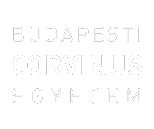Xiang, Jin (2020) The Relationship Between Health-Related Quality of Life and Productivity Loss: A Cross-Sectional Study in Chronic Skin Diseases from Hungary. TDK dolgozat, BCE, Economics section.
|
PDF
- Requires a PDF viewer such as GSview, Xpdf or Adobe Acrobat Reader
2MB |
Absztrakt (kivonat)
Background There is a growing interest in exploring the relationship between healthrelated quality of life (HRQoL) and productivity loss of chronic skin diseases and identifying economic models to estimate the economic loss. Few such studies have been published from Europe, and there are no studies comparing the loss of work productivity in patients suffering from psoriasis and hidradenitis suppurativa (HS). Objective The aim of this study was to explore the relationship between health-related HRQoL and productivity loss of affected patients with two immune-mediated chronic skin diseases, psoriasis and HS in Hungary, to identify models to estimate the health economic loss, and to compare the relationship between HRQoL and productivity loss between the two conditions. Methods Two cross-sectional datasets of patients were employed. Dermatology Life Quality Index (DLQI), DLQI-Relevant (DLQI-R) and EQ-5D-3L were used to measure HRQoL. We used the Work Productivity and Activity Impairment (WPAI) questionnaire to measure absenteeism, presenteeism, overall impairment, and daily activity impairment. The relationships between the outcome measures were analysed with Spearman’s rank-order correlations and Kruskal-Wallis test. “Then, multivariate linear regression analysis was used to set up equation models allowing the calculation of percent work productivity loss per HRQoL unit increase. Moreover, Mann-Whitney test and multivariate linear regression analysis were used to compare HRQoL and productivity loss between psoriasis and HS patients.” Results A total of 116 patients with psoriasis were analysed in this study. The average age was 47.41 years and the average disease duration was 21.72 years. Overall, 17 (14.66%) patients reported missing from work in the past week, with average 1.92 hours, due to their health problem (absenteeism), and 60 (51.72%) of patients’ work was impaired due to their health problem (presenteeism). Presenteeism and daily activity impairment strongly correlated with different HRQoL measures. As for the HS, data of 171 patients were analyzed and the average age was 37.36 years and the average disease duration was 5.03 years. Among these patients, 36 (21.05%) reported missing from work because of absenteeism, and 85 (49.71%) reported presenteeism. In contrast with psoriasis, the absenteeism was strongly correlated with diverse HRQoL measurements. Furthermore, there were statistically (p<0.05) differences between psoriasis and HS with regard to absenteeism, presenteeism, and overall impairment, while the daily activity impairment did not differ significantly between these two patient groups. Conclusion This study found that absenteeism correlated less with health status than presenteeism and daily activities impairment in psoriasis patients, while the absenteeism correlated more with health status than presenteeism and daily activities impairment in HS. “In the absence of data on indirect costs, work productivity loss due to psoriasis and HS can be estimated from DLQI scores and EQ-5D-3L scores. Our results provide useful input data for cost-effectiveness analyses of psoriasis and HS treatments.”
| Tétel típus: | TDK dolgozat |
|---|---|
| További információ: | 2. díj |
| Témakör: | Társadalombiztosítás, szociálpolitika, egészségügy |
| Azonosító kód: | 13266 |
| Képzés/szak: | International Economy and Business |
| Elhelyezés dátuma: | 03 Dec 2020 10:09 |
| Utolsó változtatás: | 02 Dec 2021 12:06 |
Csak a repozitórium munkatársainak: tétel módosító lap

